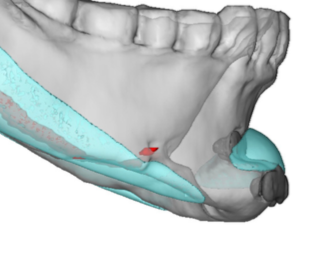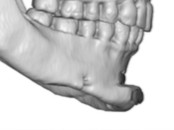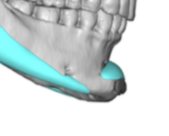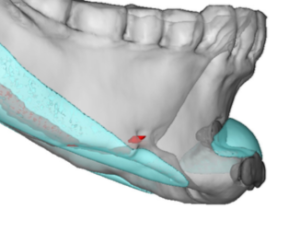Background: V line surgery, sliding genioplasty and chin wing osteotomies all place the intrabony course of the inferior alveolar nerve at risk of injury. While the exit of the nerve from the bone at the mental foramen can be seen during surgery, the bone cut must be lower than the foramen level. The nerve has been well documented to loop downward before coming out of the bone. Thus recommendations for bone cuts 5 to 6mms below the mental foramen level are recommended to minimize the risk of nerve transection.
If the nerve becomes exposed by a bone cut symptoms such as numbness, pain and pressure sensitivity are possible. While numbness gets cited as the most severe of inferior alveolar nerve injuries, a bone cut that leaves the nerve exposed by bone removal or bone repositioning also exposes it to pressure sensitivity. Without protection of the bone pressure can be directly applied to the nerve along the new inferior border. This can send shooting sensations along its path of innervation to the lip and chin or cause discomfort if it has formed a neuroma.
V line restoration is a procedure where a custom jawline implant is designed to partially or fully restore the jawline that has been removed. This always places material along the inferior border as that is where the bone cut has removed a vertical section of jawbone. The placement of such a jawline implant may provide coverage of an exposed inferior nerve if it exists.

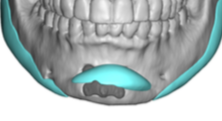
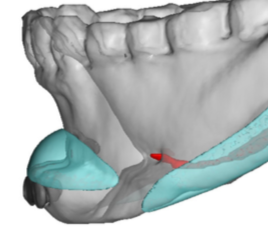
While the role of custom jawline implants in V line correction is bony restoration, covering over an exposed inferior alveolar nerve can provide a secondary benefit.
Case Highlights:
1) V line surgery does not place the inferior alveolar nerve at risk with the anterior bone cut.
2) Cutting the inferior alveolar nerve in its bone canal runs the risk of numbness and pressure sensitivity.
3) A custom jawine implant that covers the exposes nerve in this case eliminated the pressure sensitivity…an unexpected benefit.
Dr. Barry Eppley
Indianapolis, Indiana

